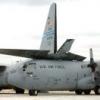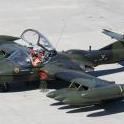Sure, I’m currently 4th year. SWA wasn’t initially huge on my radar either, but looking back and knowing what I know I probably would’ve targeted it. My guess is that’s what most guys from the other majors would say about their own airline too!
Cons:
- You’ll fly a 737…kind of cramped, non-Maxes are noisy, old timey overhead panel, etc. It’s a bigger deal to some than others depending on personal desire for variety or something big or going to the other side of the world.
- Current year 1-4 pay lags the other majors, then it is about equal year 5 and moves ahead (of narrowbody scales) after that. Still, it doesn’t reach senior wide body pay elsewhere.
- Days can get busy…3-leg days are probably average, 2 or 4-leg days are common, and 1 or 5-leg days exist (somewhat rare). So in a same duty day you’re doing more briefings, more up-down, ears popping, etc. I find it helps the day go by quicker than droning, but definitely tough to catch up on the Netflix que—I mean study the FOM.
- Generally younger and evenly spread pilot group, so retirements trickle compared to other guys. Upgrade seems to always be at 8 years, give or take.
- No long call reserve, and nobody in the pilot group who has to go back to the sims because they’re overdue on landing currency. The game for senior guys at other airlines seems to be minimizing time at work while still getting paid. At SWA it’s maximizing pay for the time spent at work.
Pros:
- 11 domiciles around the country (except the PNW) so odds of being able to drive to work are fairly high.
- Company stability…the airline is run by real nerds who stay for the long haul. 2020 was the first year in its 50 year history it hasn’t turned a profit, and its financials are always well ahead of industry-standard.
- Job security: I’ll keep this as a pro because it’s still true SWA has never furloughed a pilot. But I’d caution that past performance doesn’t equal future success, and last year there was an uncharacteristic demand from the company for pilot concessions, which when we didn’t agree to, resulted in furlough notices going out. It’ll be interesting to see if it foreshadowed a more “traditional” labor relations posture than we’ve historically enjoyed moving forward.
- Trip trade market: since everyone is qualified on the same aircraft you’ve got a robust ability to trade or pickup trips with other pilots or with the company (some of that can pay time and a half). Picking up flying to make more money is usually pretty easy (except during pandemics). The flip side is the only way to decrease your flying is to hope another pilot wants to take your trip from you, which is tougher to do in July than it is February.
- Culture-wise, I won’t get too rah-rah other than to say it is exactly as it looks from the outside. The work groups pretty much all get along and nobody takes themselves too seriously. I haven’t flown with anyone yet who I wouldn’t fly with again.
- Being home: I think 50% of trips are 3-days, and the remaining are divided between 1, 2, and 4 days. Average line is 3-on, 4-off (x4) or 4-on, 3-off (x3) plus a random day for 13 total days of work. And you’re never more than 3 time zones away, so you can stay in touch with the family, get business done on the road, or get home quick if there’s a family emergency.
- No language barriers, NATS procedures, non-radar environments, ATC driving you into thunderstorms, etc.
All told, it’s not perfect or everyone’s cup of tea (especially if they’ve got the widebody international itch), but it’s been a joy for me and never nearly as bad as some of the warnings I’d heard. Definitely a great place to spend a 30+ year career!




